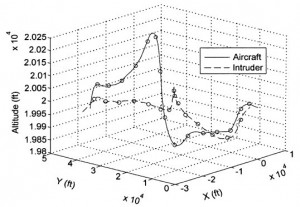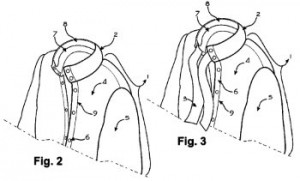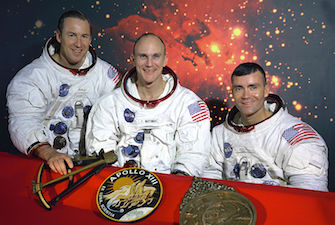45 years ago the National Aeronautics and Space Administration was facing down one of its most harrowing challenges: getting Apollo 13 and its three-man crew back to Earth safely after an oxygen tank exploded onboard the spacecraft. What was supposed to be a venture on the surface of the Moon to explore the lunar highlands turned into what NASA considers to be a successful failure for the agency as the crew was recovered without any fatalities.
Flash forward to the present and it’s easy to see that NASA is experiencing a lot of activity in some very interesting areas. Mars has been the subject of fascination for scientists over the course of centuries, inspiring many people other than David Bowie to question whether there is life on it. Just last week NASA released a report indicating that there are atmospheric conditions that would allow liquid brine to form on the surface of the Gale Crater; the data came from one years’ worth of temperature and humidity measurements collected by NASA’s Curiosity rover. As NASA officials explain in the RT piece linked above, the fact that the atmospheric conditions for brine formation, occurring when salts trap enough water from humid air to dissolve in them, are experienced at the Gale Crater is a good indication that water can form on other parts of Mars, where shading or elevation can contribute as well.
Detecting the presence of water in any formulation on the surface of Mars is a giant leap for mankind, and it’s not the only development that NASA is currently pursuing. In mid-April, pictures returned to NASA from its New Horizons spacecraft depicted the first color images ever captured of Pluto, the dwarf body that used to be considered the 9th planet of our solar system. In fact, NASA’s been making quite a stir with the multimedia that it has released in recent weeks. Terry Virts, a NASA astronaut currently serving on the International Space Station, used a GoPro helmet camera to become the first astronaut to capture high-definition video of Earth while on a spacewalk. Another video getting a lot of attention shows an autonomous vehicle developed by NASA, known as the Modular Robotic Vehicle, which supports 180° of steering actuation for each of the vehicle’s wheels, making it extremely maneuverable. NASA and Nissan entered into a five-year agreement for research and development partnership leading towards the development of a self-driving car, announcing the partnership at this year’s Consumer Electronics Show. The 2015 electronics industry event is where we first noted a large amount of activity in autonomous vehicle development, an area of interest we’ve been following closely this year here at IPWatchdog.
We could very well see NASA technology on our roads in the coming years, but the U.S. government’s space agency still has its eyes scanning the skies above us. In 2011, NASA embarked on a joint mission with the European Space Agency on a civil defense and space exploration project known as the Asteroid Impact and Deflection Assessment (AIDA) mission. This project will be responsible for the 2022 impact between the near-Earth asteroid Didymos and the Double Asteroid Redirection Test (DART) equipment that the project will develop. It’s hoped that AIDA will uncover techniques for protecting Earth in the case that an asteroid en route towards impact with our planet is ever discovered. Other AIDA data will be used to determine if astronauts can safely land on asteroid-sized objects in orbit.
NASA is also operating much more than New Horizons or the Curiosity rover on Mars. The space probe Juno is set to arrive at Jupiter on July 4th, 2016, and orbit that planet to determine atmospheric water levels and map Jupiter’s structure. Still more knowledge of the atmosphere on Mars is expected to come as a result of the Mars Atmosphere and Volatile EvolutioN (MAVEN) mission which launched in November 2013. The celestial bodies known as Vesta and Ceres are the targets of Dawn, a probe mission dedicated to obtaining more details about how our solar system formed. With all of this new data coming from missions such as these, one NASA chief scientist recently predicted that strong evidence of microbial alien lifeforms will be detected by 2025.
The Space Shuttle program that brought so much renown to NASA may not be with us anymore, but the space exploration agency is still devoted to learning more about the universe around us and how we as humans can operate within it. At some point the agency is hopeful that it can contribute to the landing of the first astronauts on Mars. NASA innovations always make for an interesting profile piece so, in light of the Apollo 13 anniversary, we thought it worthwhile to take another scan of the agency’s inventions that have been patented through the U.S. Patent and Trademark Office.
[Varsity-5]
NASA Patents: From Supercapacitors to Scarves
Keeping in mind the combustible gas explosion that led to the suspenseful aspects of the Apollo 13 mission, we were intrigued to note a technology developed by NASA to detect combustible gas leaks. U.S. Patent No. 8945473, titled Chemochromic Detector for Sensing Gas Leakage and Process for Producing the Same, claims a combustible gas sensing garment that includes a chemochromic pigment interdispersed within a textile polymer. The chemochromic pigment of this invention is combined with aerogel or xerogel and it is operably responsive to a combustible gas. This innovation is designed to address certain shortcomings in fuel cells that utilize hydrogen, which is combustible and has a high susceptibility to leaking.
 Alternative fuels which can deliver reduced carbon emissions are also the subject of U.S. Patent No. 8985089, titled Low Temperature Dual Fuel Combustion Utilizing Diesel and Methanol Fuels. The patent protects a method of operating a dual fuel engine by supplying the combustion chamber with a methanol and charge air mixture at high engine loads and direct injecting diesel fuel into the combustion chamber to initiate combustion. The charge air in this invention has a low concentration of oxygen to prevent pre-ignition of methanol before the direct injection of the diesel fuel. This engine operating method results in reduced smoke and nitrous oxide emissions in diesel engines, especially during high loads and speeds.
Alternative fuels which can deliver reduced carbon emissions are also the subject of U.S. Patent No. 8985089, titled Low Temperature Dual Fuel Combustion Utilizing Diesel and Methanol Fuels. The patent protects a method of operating a dual fuel engine by supplying the combustion chamber with a methanol and charge air mixture at high engine loads and direct injecting diesel fuel into the combustion chamber to initiate combustion. The charge air in this invention has a low concentration of oxygen to prevent pre-ignition of methanol before the direct injection of the diesel fuel. This engine operating method results in reduced smoke and nitrous oxide emissions in diesel engines, especially during high loads and speeds.
With our focus on autonomous systems we felt that it was important to note U.S. Patent No. 8983882, titled Autonomic and Apoptopic Systems in Computing, Robotics and Security. The patent protects instructions stored in a computer-accessible medium that instruct a first autonomic computing device to receive a quiesce instruction from a second autonomic computing device and invoke a quiesce component function of the first device, which can result in device deactivation and self-destruction. This invention enables autonomic robotics and security systems utilizing computer devices to destroy certain objects if they are compromised, such as if a computer system is hacked. The operation of this system is  modeled after certain biological systems, as is the technology protected for NASA by U.S. Patent No. 8924069, titled Artificial Immune System Approach for Airborne Vehicle Maneuvering. It protects a method for control of an aircraft relative to other aircraft in such a way that allows safe flight in a congested airspace. This system is directed at use in combat situations where unmanned aerial vehicles (UAVs) may have to quickly sense and respond to intruder aircraft, but those who have been following drone technologies in recent months should be able to recognize that this innovation may provide some of the sense-and-avoid capabilities that have grounded many drone operations.
modeled after certain biological systems, as is the technology protected for NASA by U.S. Patent No. 8924069, titled Artificial Immune System Approach for Airborne Vehicle Maneuvering. It protects a method for control of an aircraft relative to other aircraft in such a way that allows safe flight in a congested airspace. This system is directed at use in combat situations where unmanned aerial vehicles (UAVs) may have to quickly sense and respond to intruder aircraft, but those who have been following drone technologies in recent months should be able to recognize that this innovation may provide some of the sense-and-avoid capabilities that have grounded many drone operations.
NASA uses supercapacitors to provide the energy needed in outer space to power tools and instruments that collect the data which is analyzed by the agency. A supercapacitor utilizing the much hyped super-material known as graphene is at the center of U.S. Patent No. 8940145, entitled Graphene-Based Electrode for a Supercapacitor. It claims a method of fabricating a supercapacitor by providing an electrically conductive substrate having surfaces spaced apart, providing a layer of metal oxides contiguous to the first substrate surface and providing a layer of chemically reduced graphene oxide contiguous to the second surface to provide the substrate with an electrical double layer. The use of the graphene material in this supercapacitor is intended to provide both a high energy density and a high power density, both of which has not been achieved by the use of other materials in supercapacitors.
 We thought we would wrap up our survey of NASA innovation with a look at an intriguing patent that protects an article of fashion developed by the agency. U.S. Patent No. 8955165, titled Article of Clothing for Storing and Deploying a Scarf, discloses an article of clothing comprised of a coat with a collar, a sleeve with a pair of flaps defining a sleeve channel incorporated into the collar for storing and deploying a scarf, a means for attaching the scarf to the interior of the sleeve channel and a closure mechanism for engaging and disengaging the flap edges to open and close the sleeve channel. The scarf of this clothing article would be secured through both Velcro and elastic means and prevent the scarfs from being lost carelessly; the patent specifically notes how useful this will be for children’s winter clothing. Anyone who might think it a little strange that NASA would be developing better clothing items would do well to remember that the same agency brought us the research and development that led to baby formula and smartphone cameras.
We thought we would wrap up our survey of NASA innovation with a look at an intriguing patent that protects an article of fashion developed by the agency. U.S. Patent No. 8955165, titled Article of Clothing for Storing and Deploying a Scarf, discloses an article of clothing comprised of a coat with a collar, a sleeve with a pair of flaps defining a sleeve channel incorporated into the collar for storing and deploying a scarf, a means for attaching the scarf to the interior of the sleeve channel and a closure mechanism for engaging and disengaging the flap edges to open and close the sleeve channel. The scarf of this clothing article would be secured through both Velcro and elastic means and prevent the scarfs from being lost carelessly; the patent specifically notes how useful this will be for children’s winter clothing. Anyone who might think it a little strange that NASA would be developing better clothing items would do well to remember that the same agency brought us the research and development that led to baby formula and smartphone cameras.

![[IPWatchdog Logo]](https://ipwatchdog.com/wp-content/themes/IPWatchdog%20-%202023/assets/images/temp/logo-small@2x.png)


![[Advertisement]](https://ipwatchdog.com/wp-content/uploads/2024/04/UnitedLex-May-2-2024-sidebar-700x500-1.jpg)
![[Advertisement]](https://ipwatchdog.com/wp-content/uploads/2024/04/Artificial-Intelligence-2024-REPLAY-sidebar-700x500-corrected.jpg)
![[Advertisement]](https://ipwatchdog.com/wp-content/uploads/2024/04/Patent-Litigation-Masters-2024-sidebar-700x500-1.jpg)

![[Advertisement]](https://ipwatchdog.com/wp-content/uploads/2021/12/WEBINAR-336-x-280-px.png)
![[Advertisement]](https://ipwatchdog.com/wp-content/uploads/2021/12/2021-Patent-Practice-on-Demand-recorded-Feb-2021-336-x-280.jpg)
![[Advertisement]](https://ipwatchdog.com/wp-content/uploads/2021/12/Ad-4-The-Invent-Patent-System™.png)






Join the Discussion
No comments yet.